Painted Hills Oregon: A First Time Visitor Guide
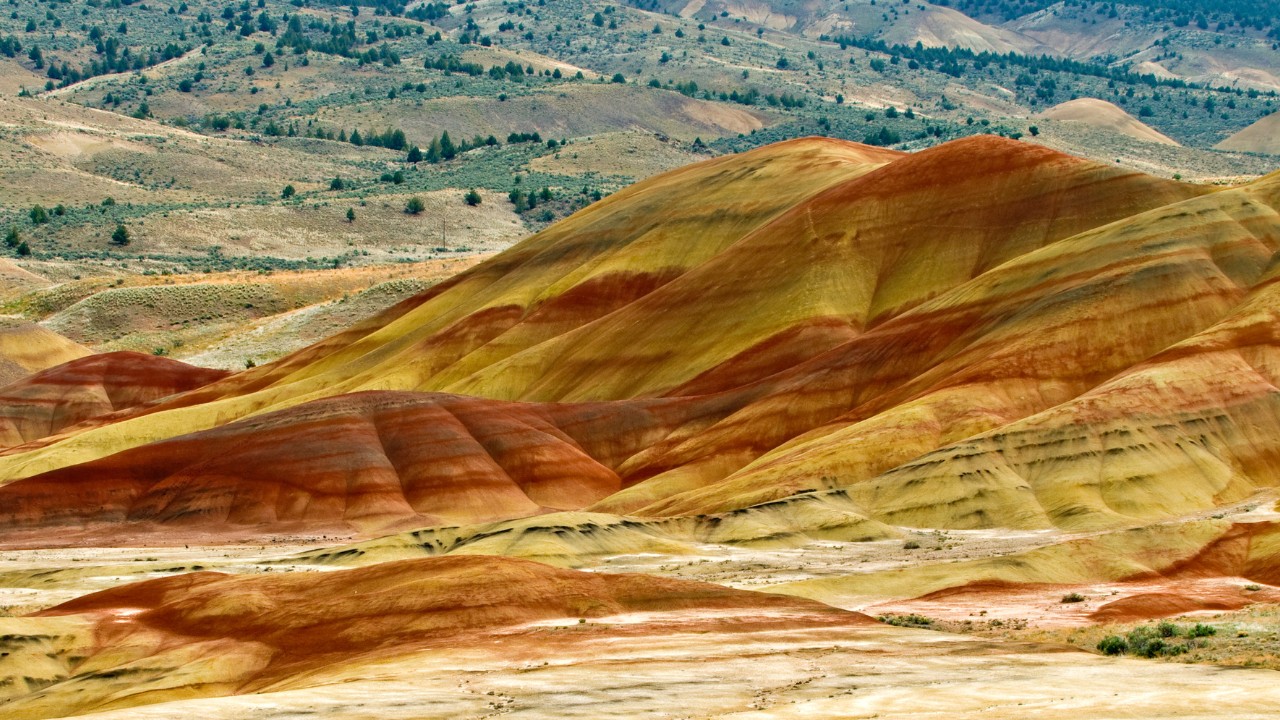
Oregon state houses a range of incredible terrains and sights and one of the most unique is the Painted Hills which is located in it’s eastern region. In this post you’ll get a full guide on exploring this area and the best things to do here.
Basic info:
- Name: Painted Hills
- Location: John Day Fossil Beds National Monument
- Fee: Free
- Hotels nearby? See closest options
Overview:
The Painted Hills are one of the most stunning and unique natural wonders in the Pacific Northwest. Part of the John Day Fossil Beds National Monument, the Painted Hills showcase vibrant layers of color that tell a story of ancient climates, plant life, and geological transformations over millions of years. This is one of the most unique sights you’ll find in the United States and best of all, it’s free to visit! There are 5 different hikes that’ll help you see this area to it’s fullest which will be covered shortly.
Photos:
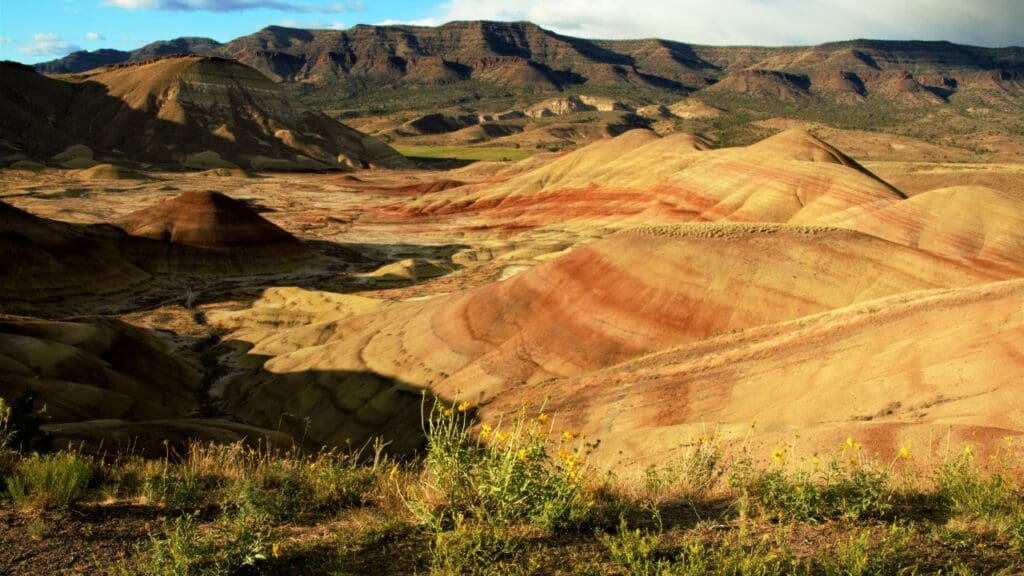
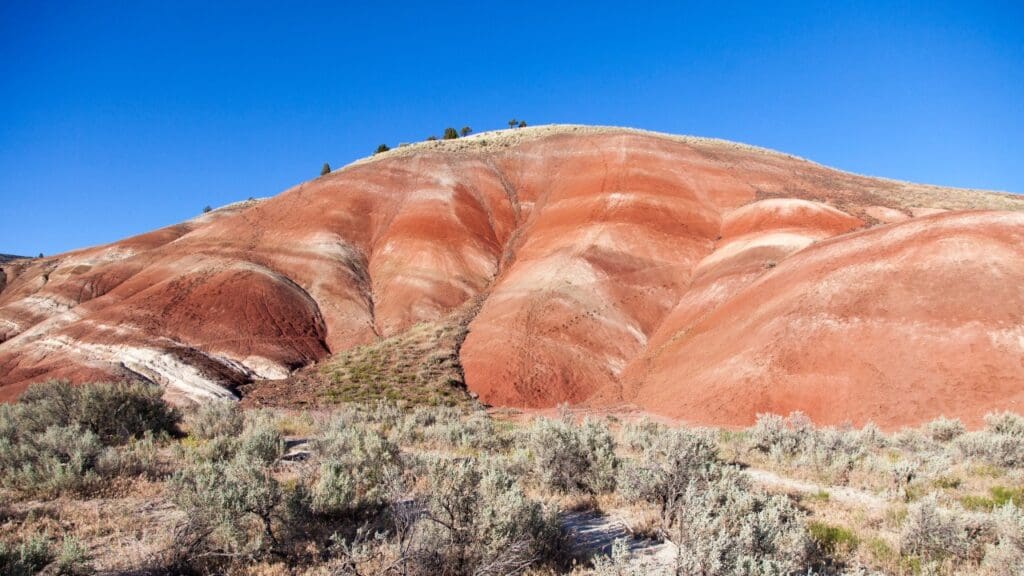
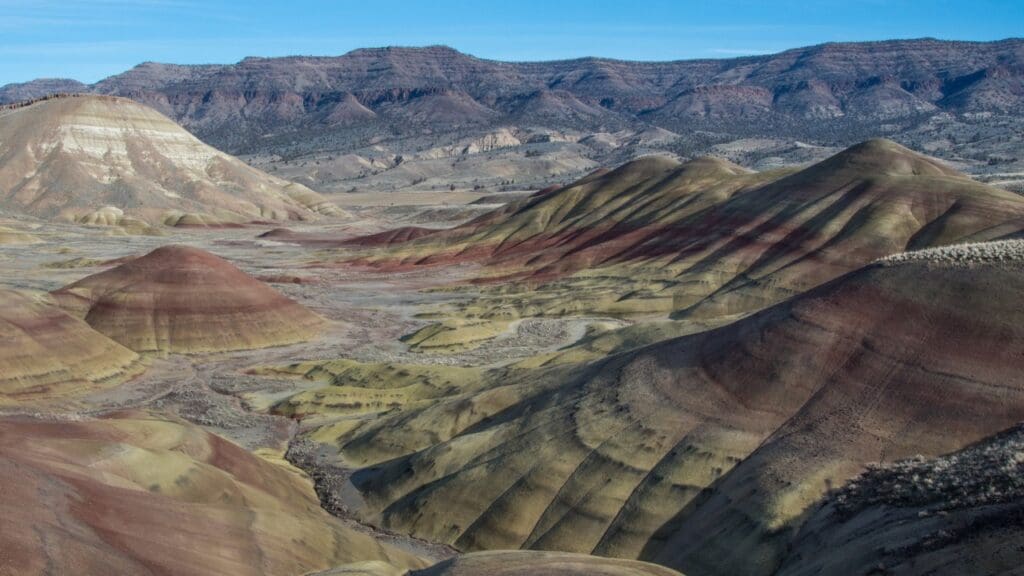
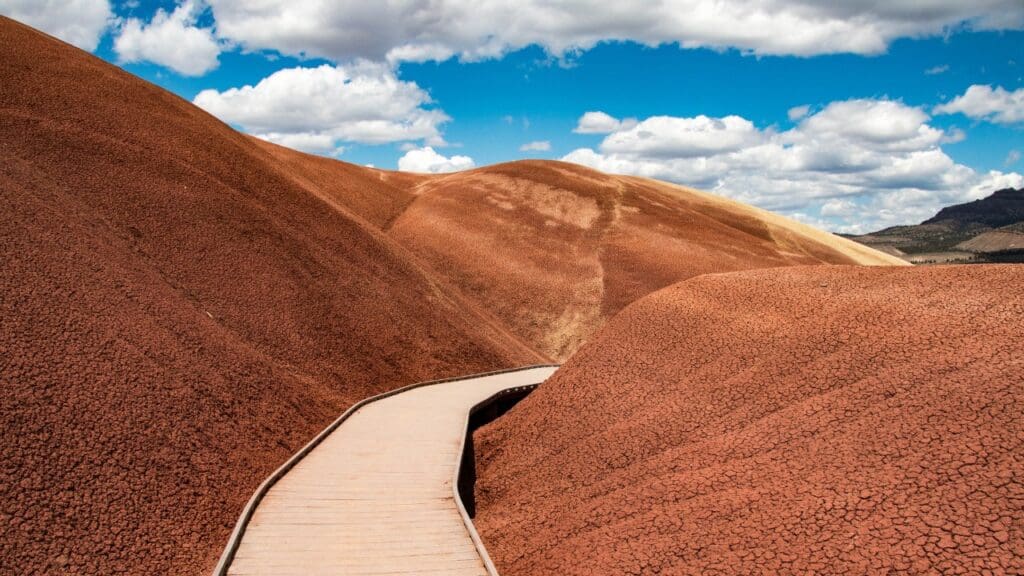
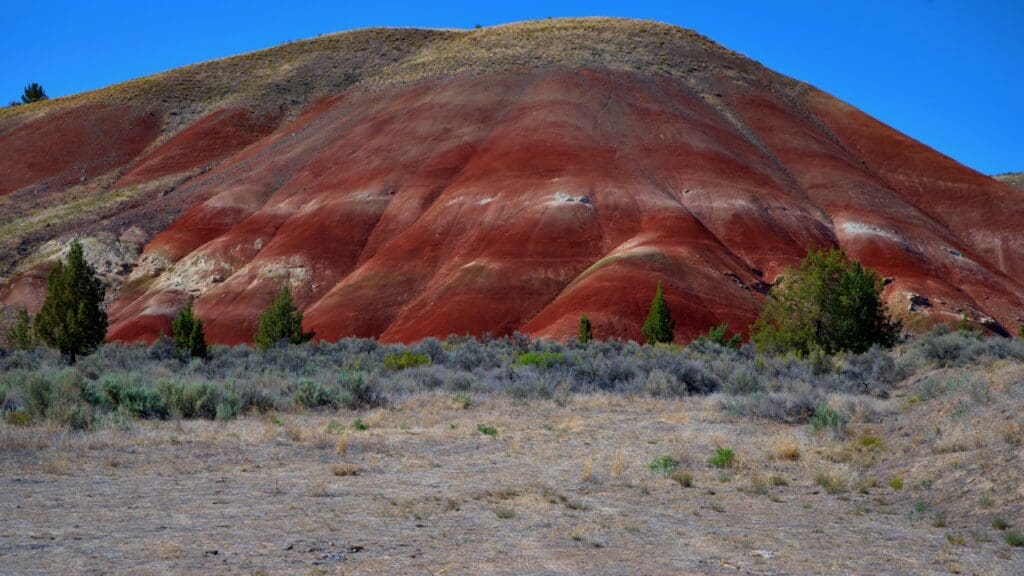
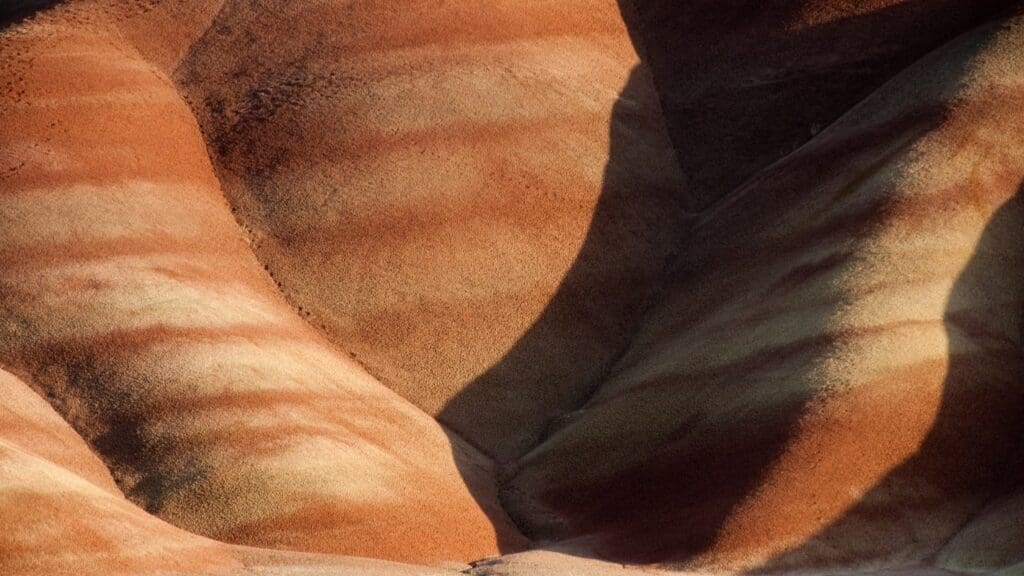
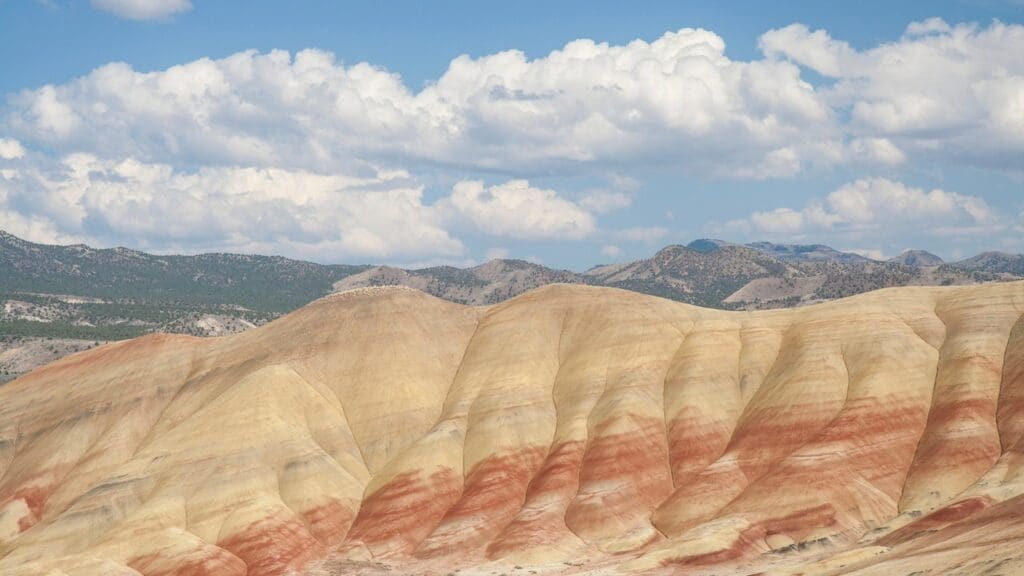
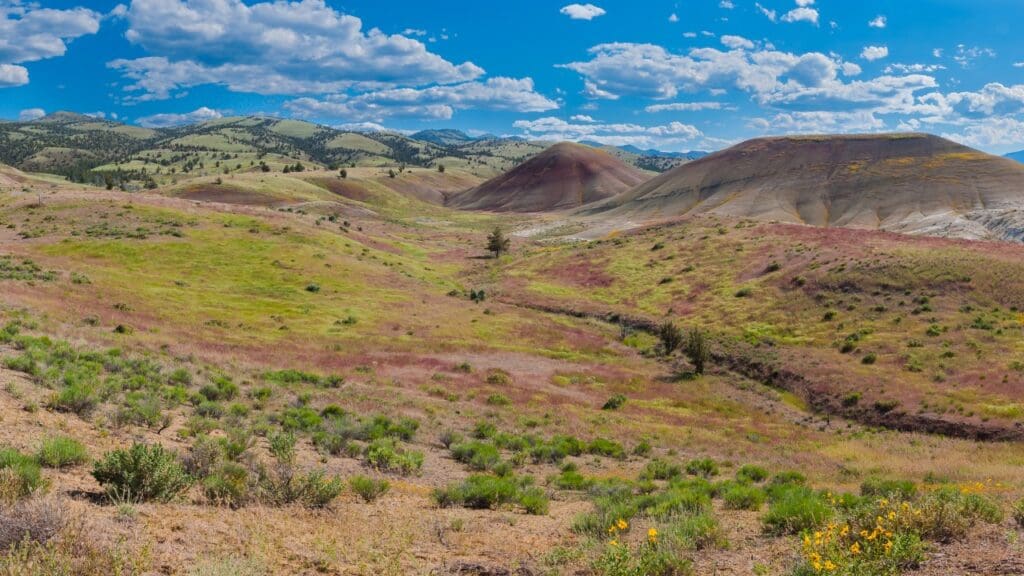

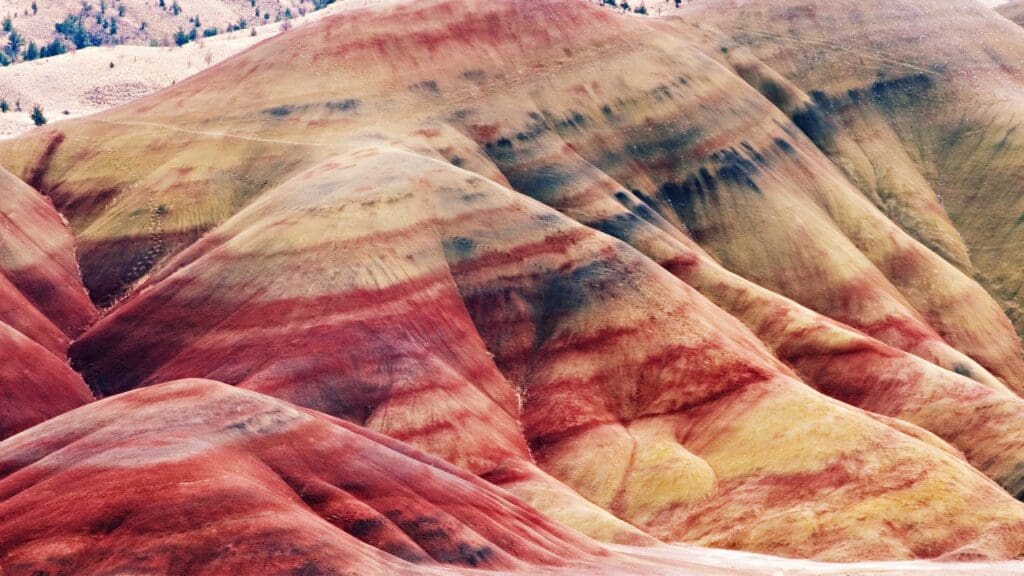

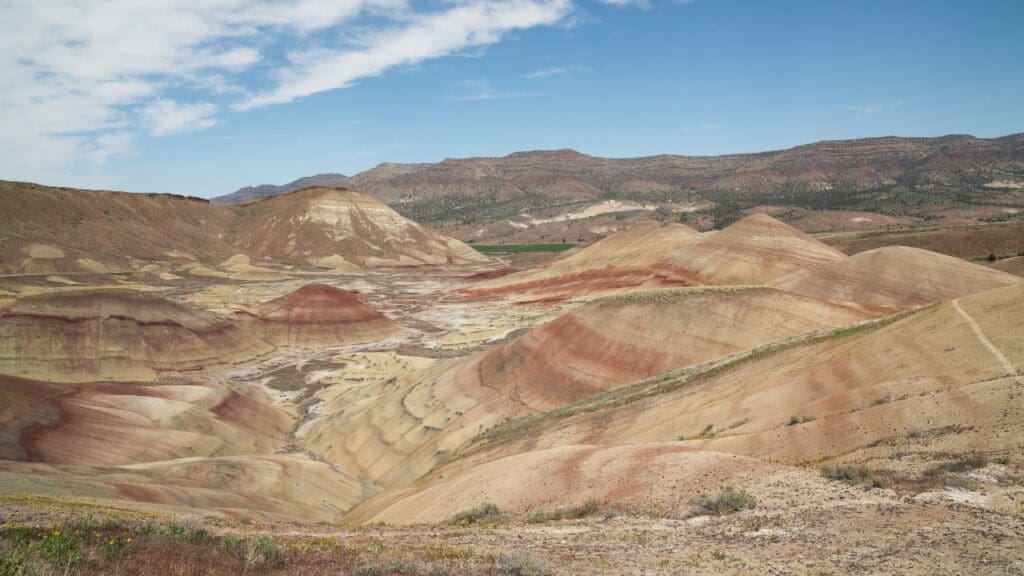
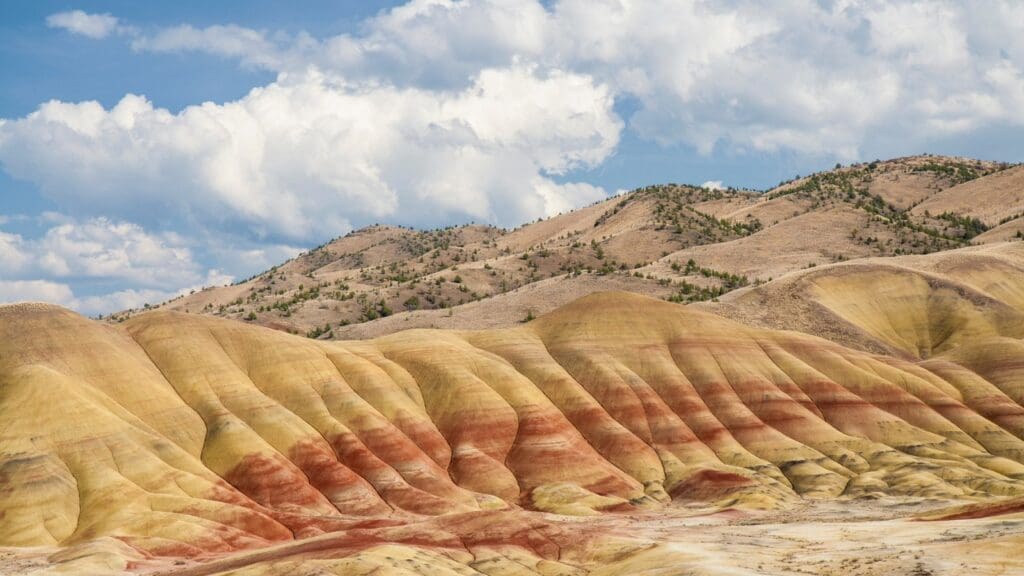
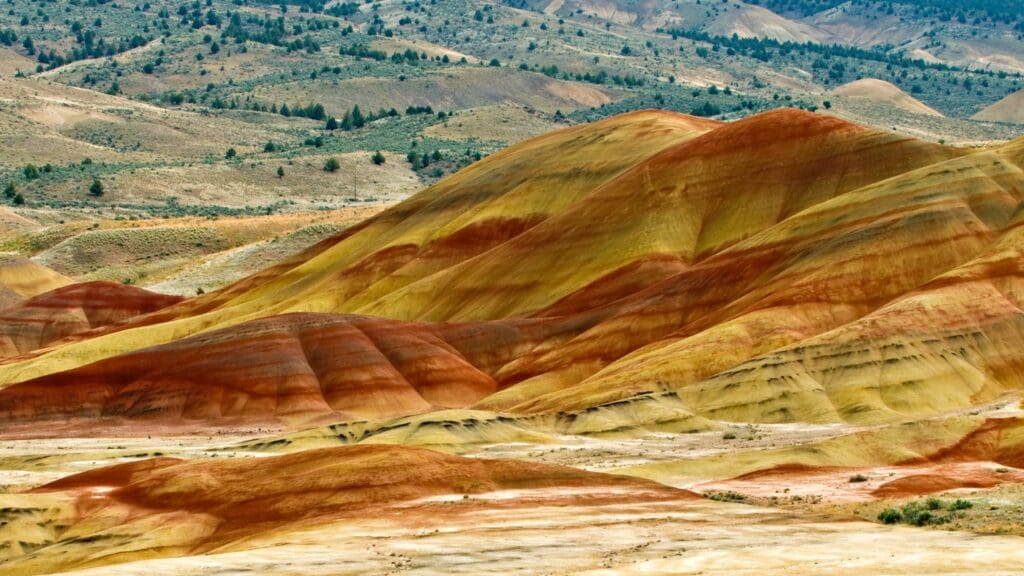
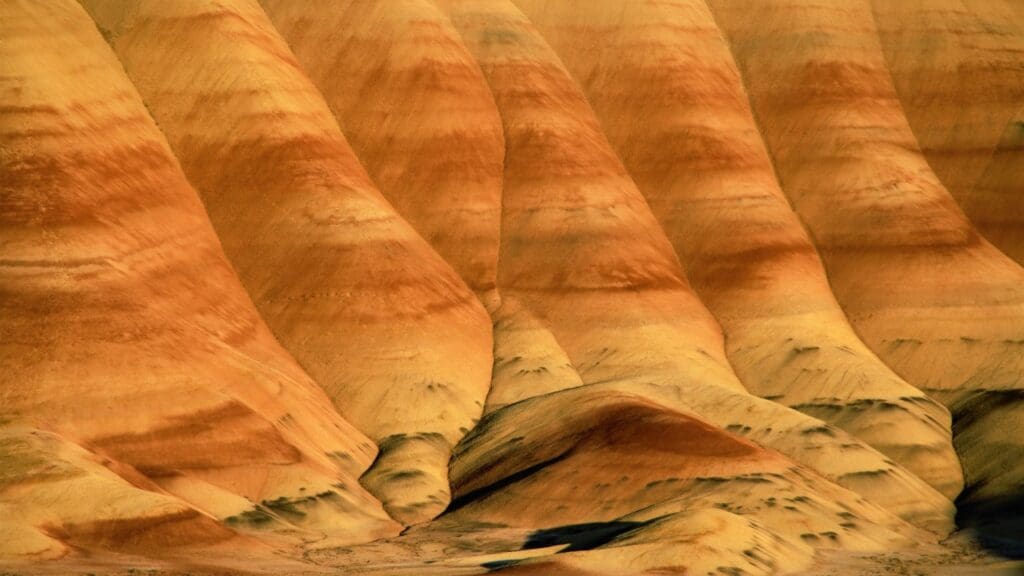
Getting There:
The Painted Hills are located in north-central Oregon, approximately 90 miles east of Bend. Here’s how you can reach this remarkable destination:
- By Car: The most common way to reach the Painted Hills is by driving. From Bend, it’s about a 2-hour drive via U.S. Route 26. If you’re coming from Portland, it’s about a 4.5-hour drive southeast, also via U.S. Route 26. The drive is scenic, taking you through rolling hills, forests, and open countryside.
- Parking and Access: Once you arrive, there’s a designated parking area near the entrance, with additional parking at each trailhead. The roads to the Painted Hills are well-maintained, but be prepared for a short stretch of gravel road leading to the main parking area.
Best Times to Visit:
The Painted Hills are a year-round destination, but the colors and overall experience vary depending on the season and weather conditions.
- Spring (March to May): Spring is a fantastic time to visit, as the temperatures are mild, wildflowers begin to bloom, and the colorful hills are vibrant against the green foliage. Daytime temperatures typically range from 50°F to 70°F (10°C to 21°C).
- Summer (June to August): Summer brings warmer temperatures, often exceeding 90°F (32°C). While the hills are still beautiful during this time, it’s best to visit early in the morning or late in the afternoon to avoid the heat. The colors of the hills are most intense in the soft morning or evening light.
- Fall (September to October): Fall offers cooler temperatures, ranging from 50°F to 80°F (10°C to 27°C), making it another ideal time to visit. The hills’ colors are particularly striking against the golden hues of the surrounding grasses.
- Winter (November to February): Winter is the quietest time at the Painted Hills, with fewer crowds and cooler temperatures. While some trails may be muddy or covered in snow, the hills’ colors still shine through, creating a serene and peaceful atmosphere.
- The NPS service recommends you visit the area in the late afternoon as the colors are most lit up by that point. Depending on which season you visit will determine what constitutes late afternoon, so you can plan accordingly based on this.
Things to do:
There’s more to do at the Painted Hills than simply admiring the colors. From hiking and photography to learning about the area’s geology, here are the best activities for first-time visitors:
Hiking Trails: The Painted Hills offers 5 short hiking trails, each providing a unique perspective of the colorful formations. Here is a breakdown of each one:
- Painted Hills Overlook Trail: This is an easy 0.5 miles round-trip with barely any elevation gain. It’s one of the most popular trails in the area, offering a panoramic view of the Painted Hills. The overlook provides an excellent vantage point to see the distinct layers of red, gold, black, and orange hues. The best time to visit is during sunrise or sunset when the light accentuates the vibrant colors.
- Carroll Rim Trail: A moderate 1.6 mile rond trip trail that has about 400 feet of elevation. This trail leads to a higher viewpoint, offering a broader perspective of the Painted Hills and the surrounding landscape. It’s a moderate hike with some uphill sections, but the view from the top is well worth the effort.
- Painted Cove Trail: This is another easy 0.3 mile trail with barely any elevation gain. The Painted Cove Trail is a short boardwalk that winds through bright red claystone hills. It’s one of the best spots to see the vibrant colors up close and is suitable for all ages. The trail’s accessibility makes it a must-see stop for first-time visitors.
- Leaf Hill Trail: Another easy 0.25 mile hike with almost no elevation gain. This short trail takes visitors to an area rich with fossilized leaves from plants that lived millions of years ago. Interpretive signs along the trail provide insight into the ancient flora and climate of the region.
- Red Scar Knoll Trail: And finally there’s this trail. It’s also 0.25 miles in total with hardly any elevation gain (easy hike). This trail leads to a bright red knoll, offering a closer look at the rich colors of the hills. It’s a quick and easy hike that’s perfect for photography, especially during the golden hours.
Photography: The Painted Hills are a photographer’s dream, with vibrant colors that change throughout the day. Here are some photography tips to capture the best shots:
-
- Time of Day: The best times to photograph the Painted Hills are during sunrise and sunset, when the warm, low-angle light enhances the colors. Midday light can wash out the hues, so plan your visit accordingly.
- Use a Polarizer: A polarizing filter can help reduce glare and enhance the colors of the hills, making the reds and golds pop against the sky.
- Bring a Tripod: A tripod is essential for capturing sharp images, especially in low-light conditions. It’s particularly useful for long-exposure shots during sunrise or sunset.
- Frame with Foreground Elements: Incorporate elements like wildflowers, sagebrush, or the boardwalks into your composition to add depth and context to your photos.
Picnicking: There are picnic tables near the parking area, making it easy to enjoy a meal amidst the stunning landscape. Pack a picnic lunch and enjoy the serene beauty of the hills, but remember to pack out all your trash and leave no trace.
Geology and Fossil Exploration: The Painted Hills are part of the John Day Fossil Beds National Monument, which is known for its rich geological and paleontological history. The layers of the hills represent different climate periods, with reds indicating warmer, wetter climates and yellows indicating drier periods. While fossil collecting is prohibited, you can learn about the region’s ancient history at the Thomas Condon Paleontology Center, located about an hour’s drive from the Painted Hills.
Tips for Visitors:
- Stay Hydrated: The area can be quite dry, especially during summer, so bring plenty of water. There are no water fountains at the trailheads, so be sure to carry enough for your visit.
- Wear Sun Protection: The Painted Hills offer minimal shade, so bring a wide-brimmed hat, sunglasses, and sunscreen to protect yourself from the sun. Light, breathable clothing is recommended, especially during warmer months.
- Plan for Limited Facilities: The Painted Hills area is remote, with limited facilities. There are no restaurants or shops nearby, so bring snacks and any other essentials you may need for your visit.
- Check the Weather: While the Painted Hills are generally accessible year-round, the trails can become muddy after rain, making hiking challenging. Check the weather forecast before your trip, and consider postponing your visit if heavy rain is expected.
- Be Respectful of the Landscape: The Painted Hills are a fragile ecosystem, so it’s important to stay on designated trails and avoid climbing on the hills. The clay-rich soil is easily damaged, and stepping off-trail can cause long-lasting harm to the formations.
- Stay for Sunset: If possible, plan to stay until sunset. The hills take on a magical glow as the sun sets, and the soft, warm light creates a stunning display of colors. Just be sure to have a flashlight or headlamp for walking back to your vehicle.
Nearby Attractions:
If you have more time to explore the area, consider visiting other units of the John Day Fossil Beds National Monument:
- Sheep Rock Unit: Located about an hour from the Painted Hills, this area features the Thomas Condon Paleontology Center, where you can learn more about the region’s fossil history and geology.
- Clarno Unit: Located about 75 miles from the Painted Hills, the Clarno Unit features towering fossil-filled cliffs and short trails with interpretive signs.
- Smith Rock State Park: This is a bit further west (near Bend) but Smith Rock State Park is an awesome sight to explore, with hikes, rock climbing, sunset views and much more.
Final Things to Know:
The Painted Hills in Oregon offer are a must visit for anyone looking to explore Oregon. Whether you’re hiking the trails, photographing the hills, or simply enjoying the tranquility of the landscape, this unique destination is a must-see for nature lovers and adventurers.
